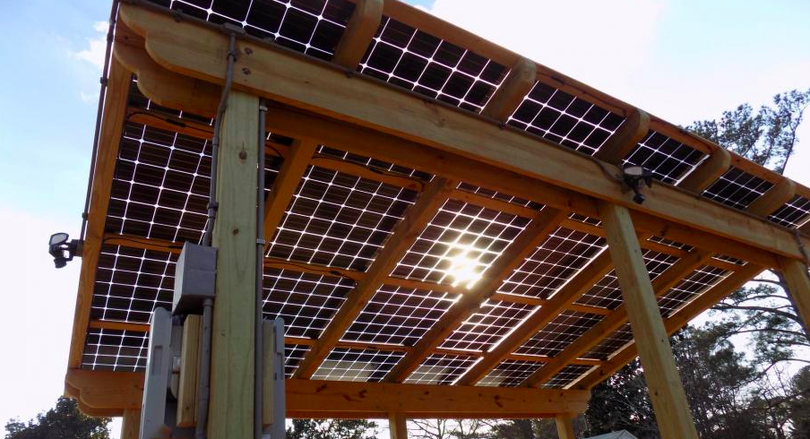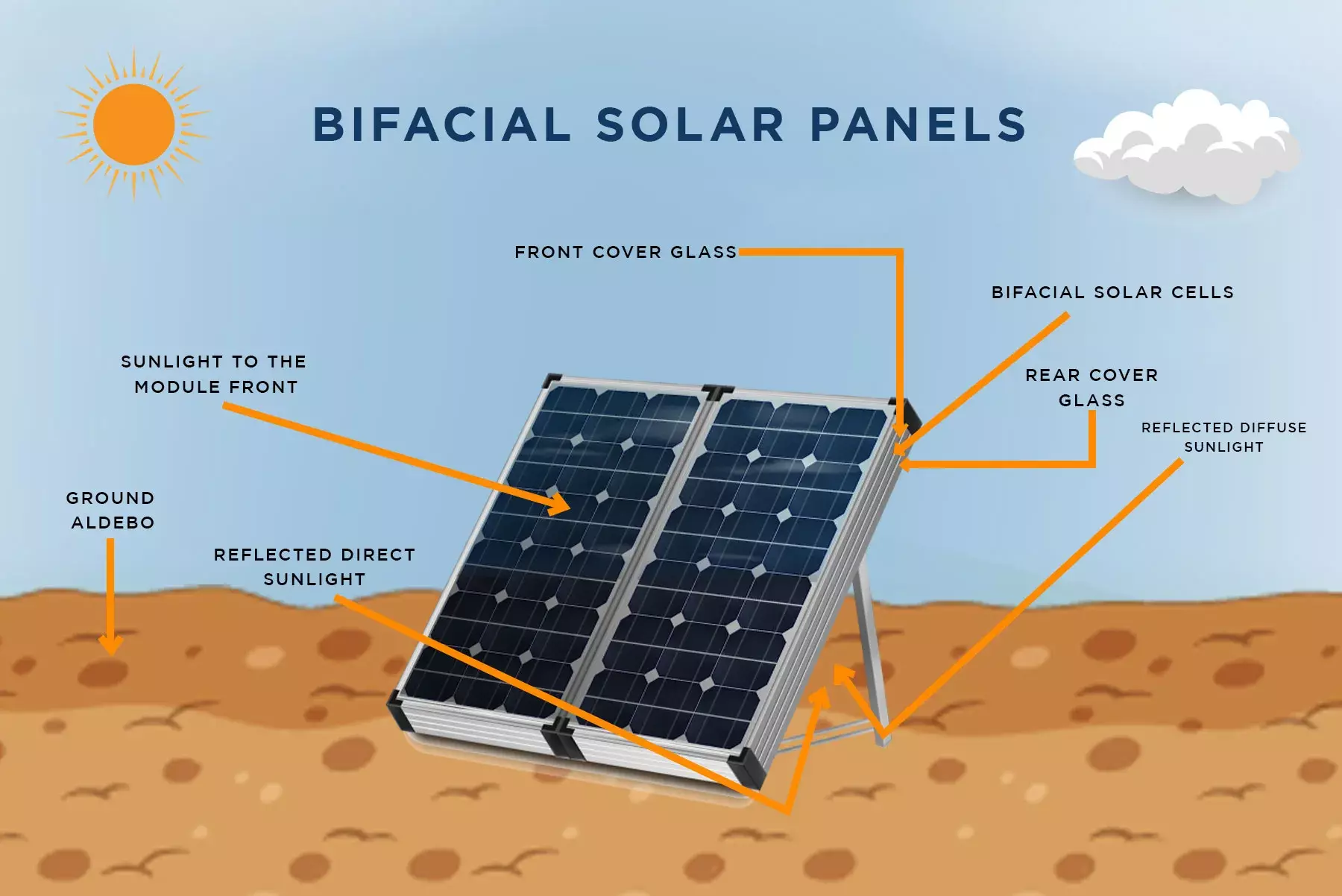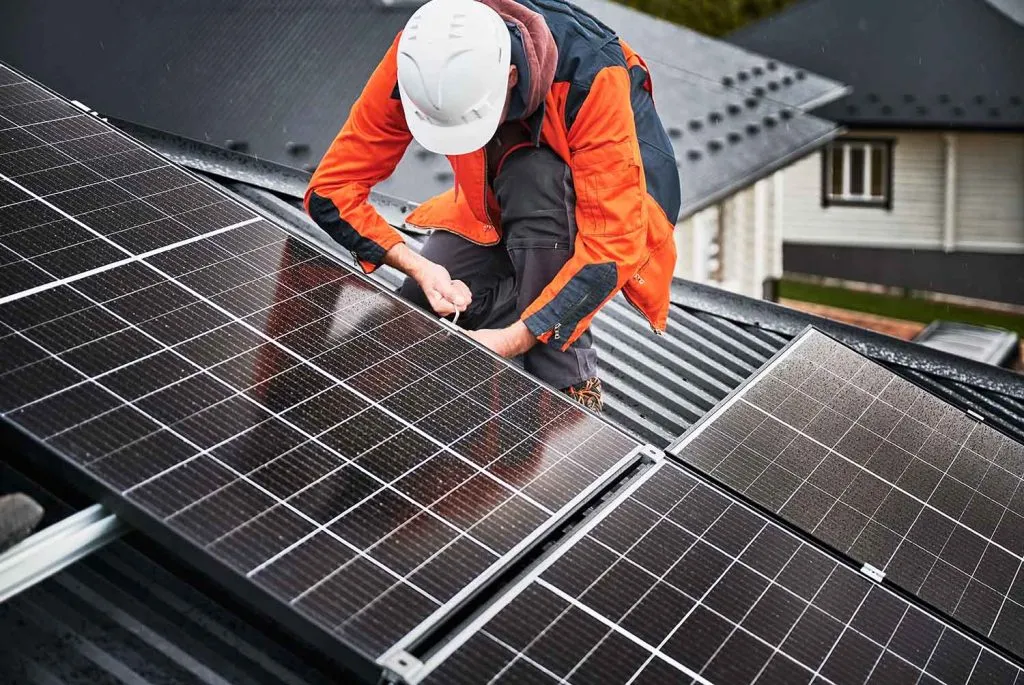Compared to conventional solar panels, bifacial solar panels can capture light not only from the front of the panel, but also from the back. So what is a double-sided solar panel? Are they worth considering? Read on to learn more about bifacial solar panel in detail in this guide.

What Are Bifacial Solar Panels
Bifacial solar panel is exactly what the name suggests: modules with photovoltaic cells on both the front and back. Conventional (monofacial) solar panels capture sunlight on the side that absorbs the light, and the light energy that cannot be captured will be reflected away. Bifacial solar panel captures light not only from the front of the panel, but also from the back. With this feature of bifacial solar panels, the power generation is increased by about 10% to 20%.
Bifacial solar panel is usually made to be completely transparent, frameless, and free of metal mesh lines, so this makes their structural integrity stronger and more aesthetically pleasing.
How Do Bifacial Solar Panels Work
The working principle of the bifacial solar panel is the same as that of ordinary solar panels, absorbing sunlight on the front surface, using photovoltaic cells to convert it into electricity, when the sunlight shines on the front of the panel, the electrons in the photovoltaic cell are excited and generate current.
Bifacial solar panel has a transparent back or glass back that allows sunlight to pass through and reflect onto the surface below the panel. Some of the sunlight trapped inside the glass reflects around until it is absorbed by the solar cell. This bifacial absorption increases the panel’s total energy production because it captures sunlight that would be lost in a traditional monofacial solar panel.
Bifacial solar panel is usually mounted on elevated mounting structures or surfaces with high reflectivity, such as white gravel or snow-covered ground, to maximize sunlight absorption on the back.

How To Install Bifacial Solar Panel
The installation of bifacial solar panel requires careful planning and execution and, due to their unique design, are usually mounted on elevated shelving systems so that light reaches the back of the panels to maximize their efficiency.
The first step in installing bifacial solar panel is to conduct a comprehensive site assessment to determine the best location for the installation of bifacial panels. You should choose a sunny, unobstructed area most of the day to install.
The front and back sides of the panels are exposed by selecting the right mounting system, while the orientation and tilt Angle of the panels are optimized to maximize sunlight exposure throughout the day.
Next, prepare the ground and roof surfaces for installation of bifacial solar panel. Make sure the floor is level, clean and free of debris.
Install the mounting rail or bracket according to the manufacturer’s instructions to connect the solar panel according to the electrical design scheme. Finally, the inverter and monitoring system are installed.
After installation, perform a thorough inspection of the system to ensure that all components are properly installed and securely secured. Make any necessary adjustments to optimize system performance.
Pros & Cons of Bifacial Solar Panel
When considering switching to bifacial solar panel, it is crucial to weigh the pros and cons. Here’s a neat breakdown to help you quickly identify potential pros and cons.
The Advantages of Bifacial Solar Panels
- Increased energy production: As the name suggests, due to the two-sided design, two-sided components can generate electricity from both sides of the panel, which can produce more energy than monofacial panels in a limited space.
- Higher efficiency: Since sunlight hits both sides, the overall efficiency of bifacial panels is higher than that of monofacial panels. As the energy output of each panel increases, the same energy output may also require less space.
- More durable: Since bifacial panels are frameless and covered with tempered glass on both sides, they are generally more durable. Tempered glass is weather-resistant, UV resistant, and can withstand high temperatures and strong winds.
- Longer service life: Due to their durability, Bifacial solar panel is expected to have a longer service life. They also have longer warranties, usually up to 30 years.
- Performs better in diffuse light conditions: Bifacial panels capture diffuse light more efficiently, such as in the morning and evening on cloudy days or when direct sunlight is insufficient. This makes them ideal for use in areas with greater climate change.
- Aesthetics: Bifacial components are often more refined in design, including frameless designs that can be more seamlessly integrated into the building structure.
The Disadvantages of Bifacial Solar Panels
- High initial cost: Bifacial panels can cost up to 10% more than monofacial solar panels due to their advanced materials and design.
- Variable performance: Efficiency gains at the bottom can be inconsistent, depending on the environment and surrounding surfaces.
- Maintenance required: Given that both sides are exposed, more frequent cleaning may be required to maintain optimal performance.
Bifacial Solar Panels Price
The average cost of a bifacial solar panel is between $6,000 and $12,000, depending on the number of panels you need.
If you want to maximize sunlight capture, choosing a mobile mount with about 10 bifacial panels will likely cost you about $14,000.
Bifacial photovoltaic panels can add about 10 to 20 cents/watt to the cost of solar installation, so when the additional power savings outweigh the higher equipment costs, bifacial panels make sense.

Bifacial Solar Panels Efficiency
Bifacial photovoltaic panels are generally slightly more efficient than traditional monofacial panels. Their efficiency depends on a number of factors, including the materials used, optical design and installation. In general, bifacial photovoltaic panels can achieve conversion efficiencies of up to 20% under the right conditions, which is slightly higher than many traditional monofacial solar panels.
However, the actual efficiency depends on a number of factors, including lighting conditions, geographic location, panel orientation and tilt Angle. Under certain conditions, bifacial photovoltaic panels can be more efficient than monofacial panels because they can capture solar energy from both sides, increasing overall energy production.
Applications of Bifacial Solar Panel
The application range of bifacial photovoltaic panels is very wide, the following are the specific applications of bifacial photovoltaic panels:
Elevated solar arrays on flat roofs, solar carports, canopies, pergolas, awnings, terraces and more.
The above application raises the solar panel above the ground so that sunlight can be reflected from the surrounding surface to the lower side of the panel, thus increasing the power generation.
Are Bifacial Solar Panels Worth It
Bifacial photovoltaic panels are cost-effective for ground installations, outdoor structures, and when flat roofs are raised high. Despite the slight price premium, its additional power generation generally means a more favorable return on investment, especially in commercial and utility-scale installations.
In cases where its back is completely hidden (such as flush roof installation), it does not make sense to use bifacial panels. In this case, you will incur additional equipment costs, but will not see additional energy savings in return.
Conclusion
If you are interested in bifacial solar panel, please contact GYCX Solar. Regardless of project size, location or other factors, comparing multiple offers is the best way to get a good deal on solar panel installation. You can receive Solar quotes for free on GYCX Solar from high-quality, pre-screened installers in your area.
